Family: Tenthredinidae
Family common name: common sawflies
Subfamily: Tenthredininae
Tribe: Perineurini
Genus: Leucopelmonus MacGillivray, 1916
Subgenera: none
The Tenthredinidae are the most species-rich family and are found throughout the world, in all continents but Antarctica. They are known as the “common sawflies.” They can generally be recognized by a cylindrical body and long, segmented antennaeantenna:
the sensory organ emerging from the front of the head, usually between the compound eyes and above the clypeus; includes the flagellum, scape and pedicel
 . Otherwise, they come in a variety of colors, sizes, and forms (Goulet 1992Goulet 1992:
. Otherwise, they come in a variety of colors, sizes, and forms (Goulet 1992Goulet 1992:
Goulet H. 1992. The genera and subgenera of the sawflies of Canada and Alaska: Hymenoptera. Symphyta. The insects and arachnids of Canada. Part 20. Agriculture Canada Publication.).
Sawflies in the Tenthredininae subfamily are relatively large compared to others in the family, often with distinct colorful markings. Some are wasp-like with black and yellow stripes (Goulet 1992Goulet 1992:
Goulet H. 1992. The genera and subgenera of the sawflies of Canada and Alaska: Hymenoptera. Symphyta. The insects and arachnids of Canada. Part 20. Agriculture Canada Publication.). Many species’ life histories are not known. Some Tenthredininae species feed uniquely, as adults, on flower pollen and other insects (Smith 1993Smith 1993:
Smith DR. 1993. Systematics, life history, and distribution of sawflies. Pp. 3-32. In: Wagner MR and Raffa KF, eds. Sawfly Life History Adaptations to Woody Plants. University of Minnesota Academic Press. 581 pp.). They can be distinguished from other subfamilies by wing venationvenation:
the network of veins on a wing
(Goulet 1992Goulet 1992:
Goulet H. 1992. The genera and subgenera of the sawflies of Canada and Alaska: Hymenoptera. Symphyta. The insects and arachnids of Canada. Part 20. Agriculture Canada Publication.).
Leucopelmonus is monotypicmonotypic:
describes having only one representative; ex. a genus that includes only one species
. Leucopelmonus annulicornis can be recognized by a wide white band on the elongate antennaantenna:
the sensory organ emerging from the front of the head, usually between the compound eyes and above the clypeus; includes the flagellum, scape and pedicel
 and reddish-brown legs and thoraxthorax:
and reddish-brown legs and thoraxthorax:
the second and middle segment of the body, between the head and abdomen
 (Taeger et al. 2010Taeger et al. 2010:
(Taeger et al. 2010Taeger et al. 2010:
Taeger A, Blank SM, and Liston AD. 2010. World Catalog of Symphyta (Hymenoptera). Zootaxa 2580: 1-1064., BugGuide 2019BugGuide 2019:
BugGuide. Accessed January 2019. https://bugguide.net).
There is one described extantextant:
in existence; opposite of extinct
species worldwide, and it is NearcticNearctic:
describing the region of the Northern Hemisphere that includes North America south through northern Mexico
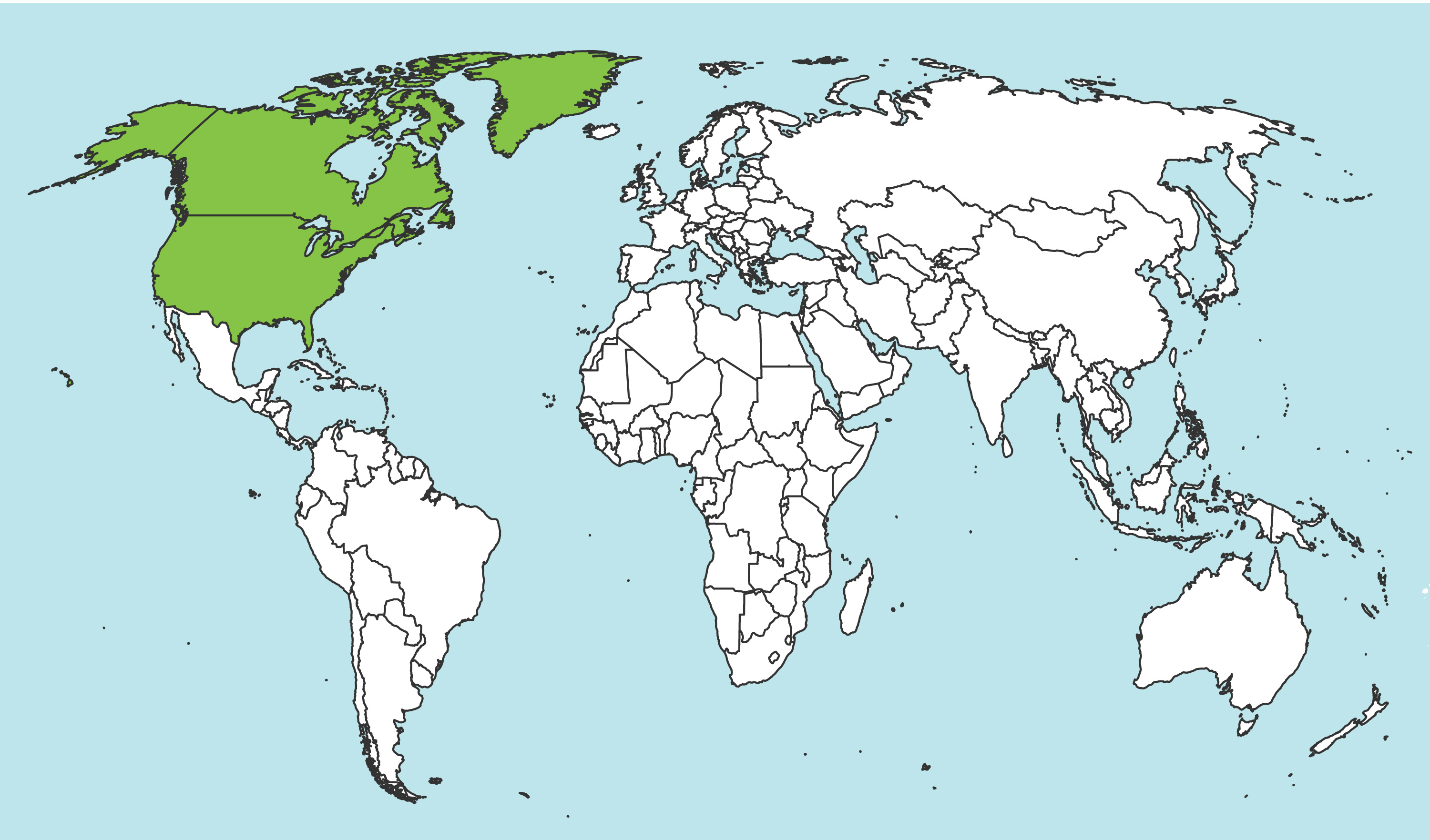 (Taeger et al. 2010Taeger et al. 2010:
(Taeger et al. 2010Taeger et al. 2010:
Taeger A, Blank SM, and Liston AD. 2010. World Catalog of Symphyta (Hymenoptera). Zootaxa 2580: 1-1064.).
Subfamily characters
 vein M and 1m-cu parallel (Goulet 1992Goulet 1992:
vein M and 1m-cu parallel (Goulet 1992Goulet 1992: vein R bent at basebase:
vein R bent at basebase: Sc (Goulet 1992Goulet 1992:
Sc (Goulet 1992Goulet 1992: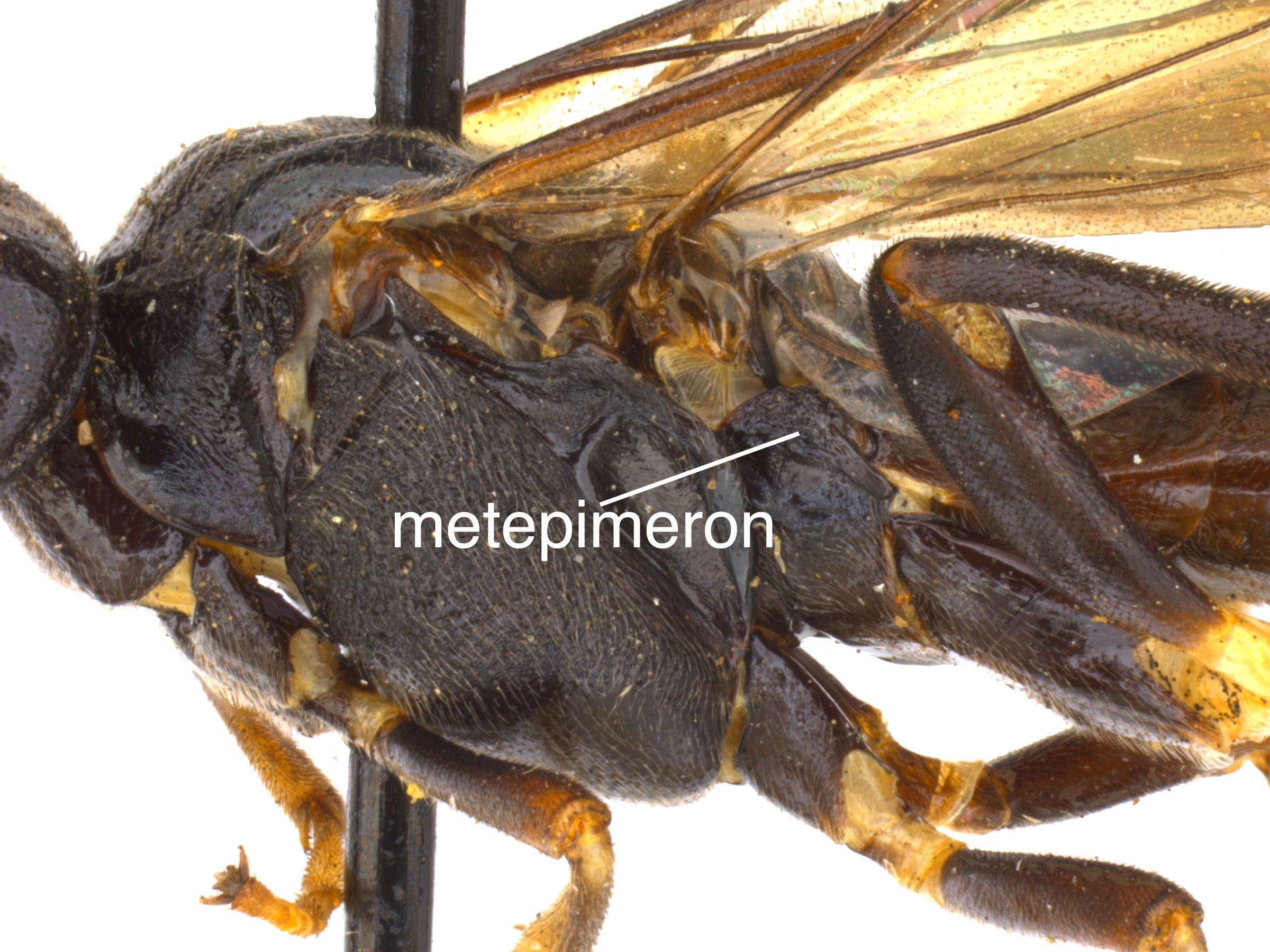 separated from metepisternummetepisternum:
separated from metepisternummetepisternum: by distinct furrowfurrow:
by distinct furrowfurrow: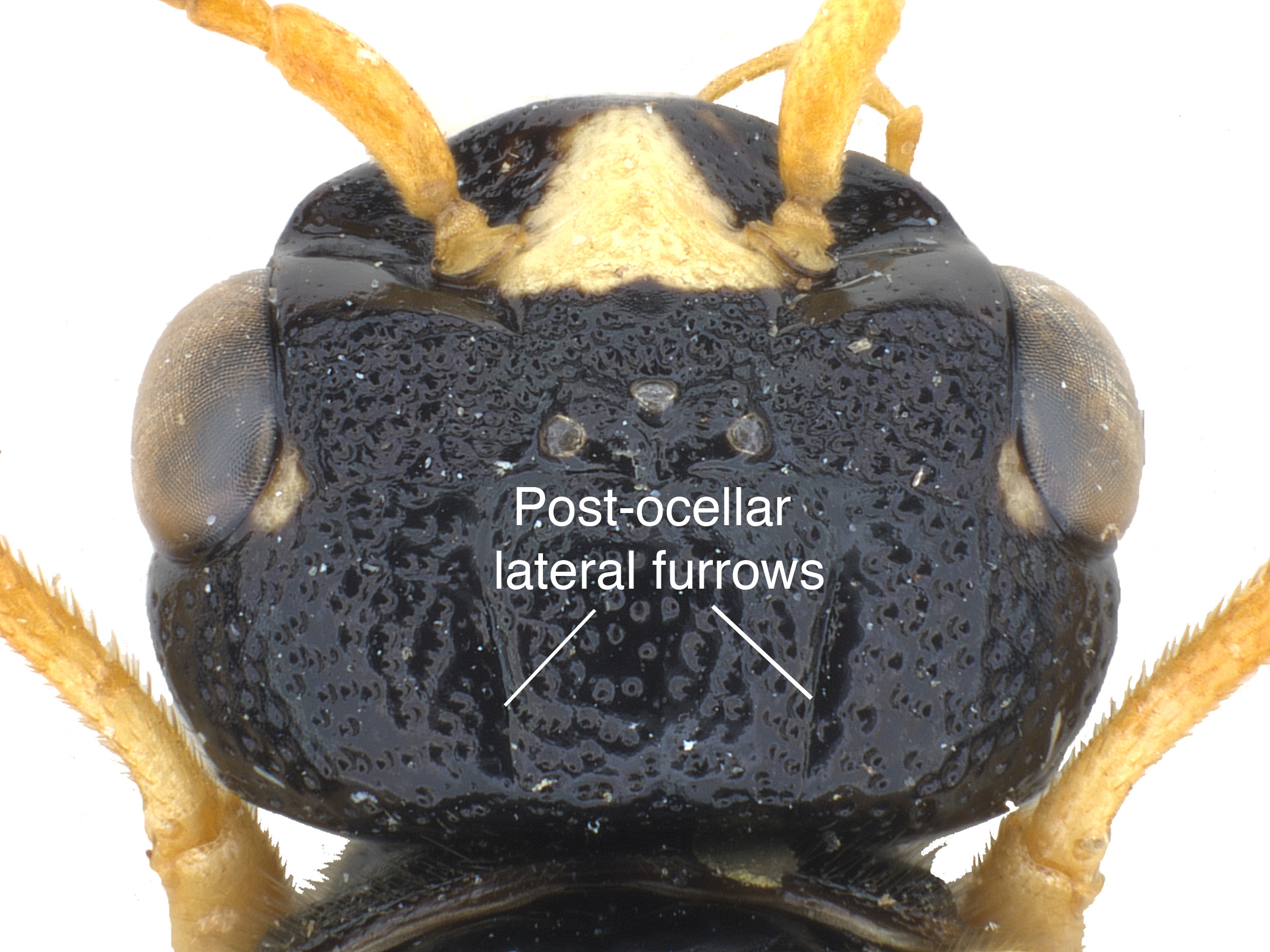 (Goulet 1992Goulet 1992:
(Goulet 1992Goulet 1992:Genus characters
 deeply notched (MacGillivray 1919MacGillivray 1919:
deeply notched (MacGillivray 1919MacGillivray 1919: vein 2A+3A complete, connected to 1A by crossveincrossvein:
vein 2A+3A complete, connected to 1A by crossveincrossvein: anal crossveinanal crossvein:
anal crossveinanal crossvein: vein 2r present (Goulet 1992Goulet 1992:
vein 2r present (Goulet 1992Goulet 1992: vein M intersecting Sc+R basalbasal:
vein M intersecting Sc+R basalbasal: veins 1m-cu and Cu1 120°–150° (Goulet 1992Goulet 1992:
veins 1m-cu and Cu1 120°–150° (Goulet 1992Goulet 1992: anal crossveinanal crossvein:
anal crossveinanal crossvein: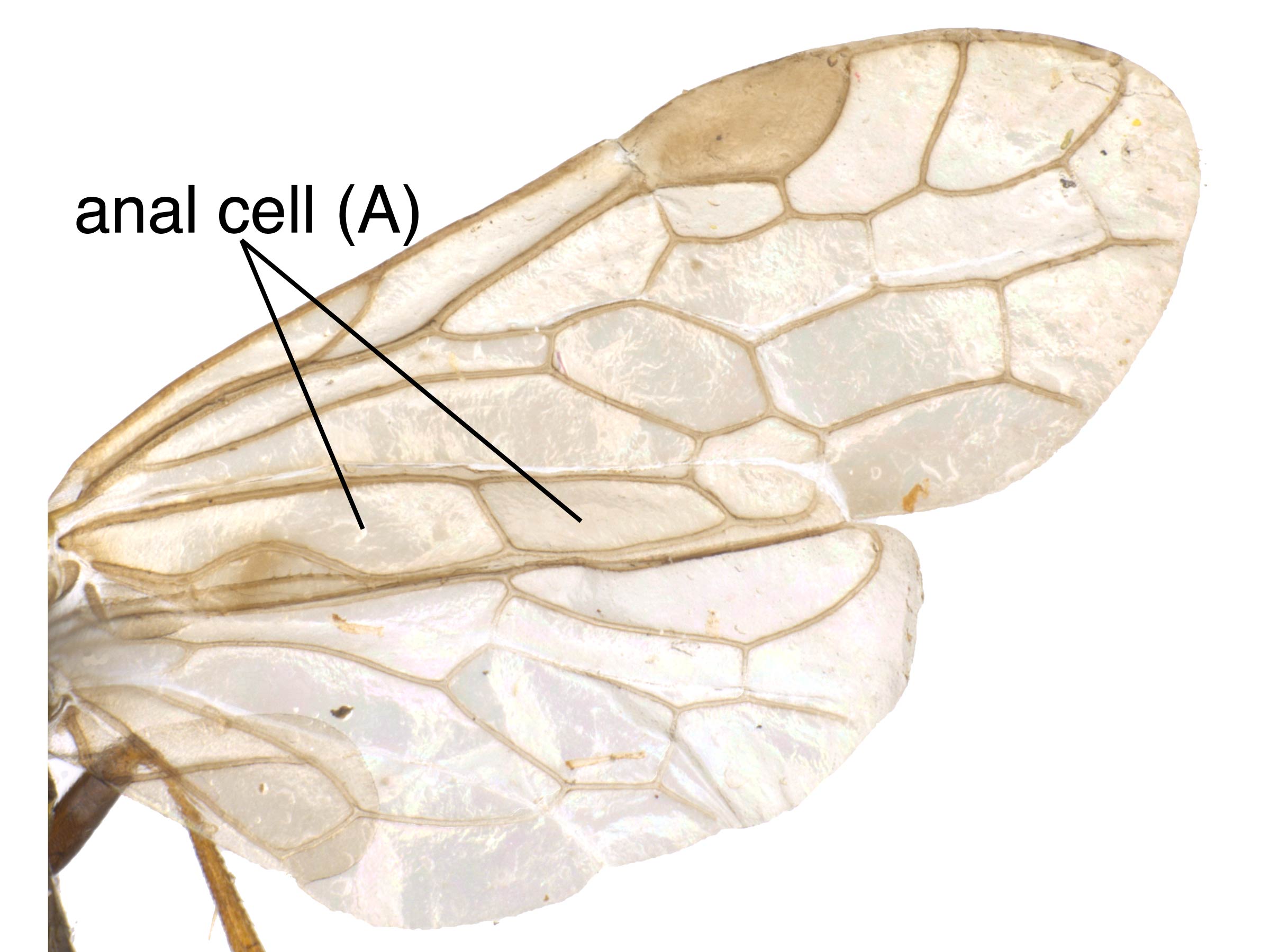 (Goulet 1992Goulet 1992:
(Goulet 1992Goulet 1992: not distinctly angled on lower posterior corner (Goulet 1992Goulet 1992:
not distinctly angled on lower posterior corner (Goulet 1992Goulet 1992: bifidbifid:
bifidbifid: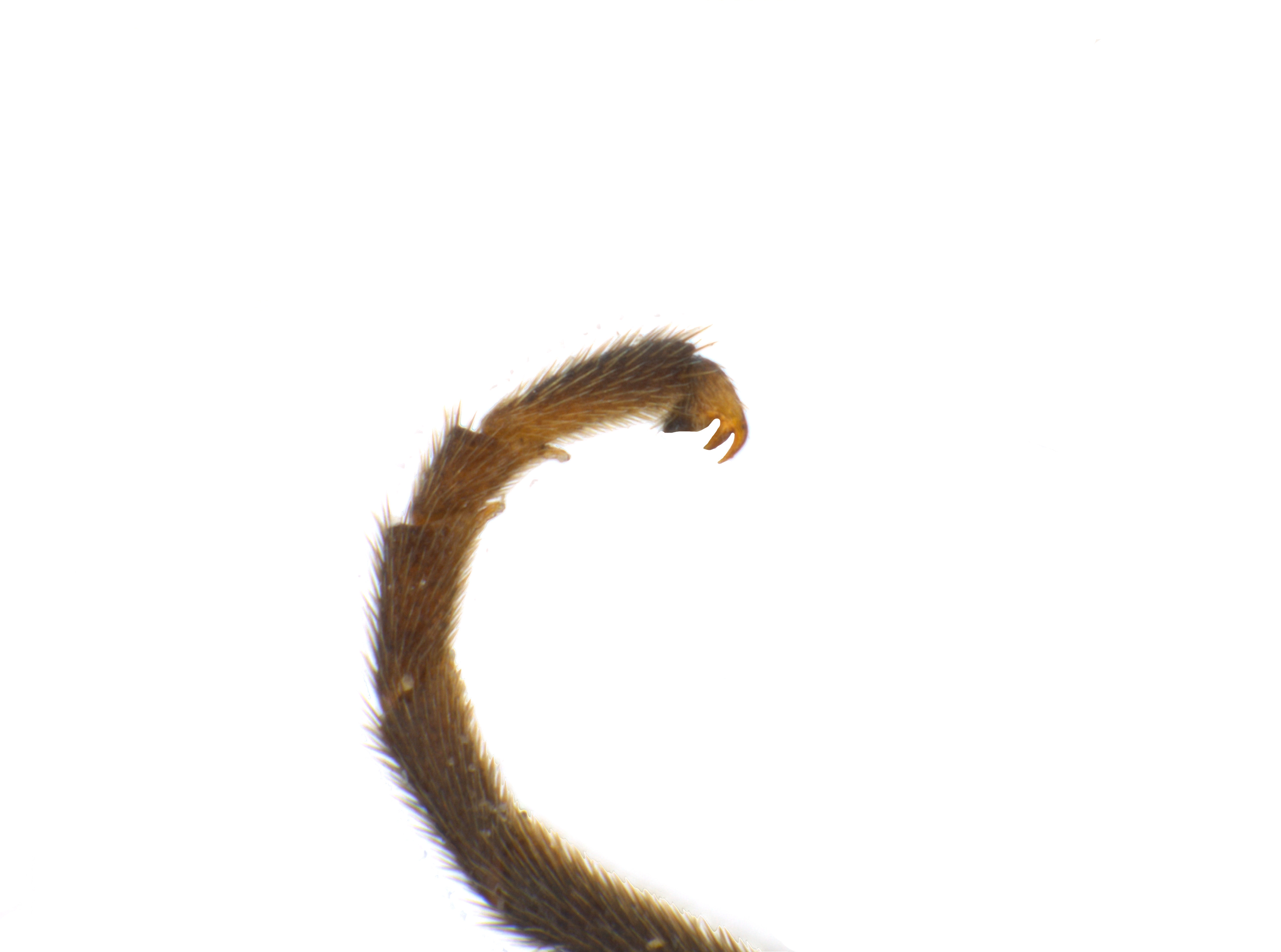 with distinct basalbasal:
with distinct basalbasal: 1–2X medial length of postnotumpostnotum:
1–2X medial length of postnotumpostnotum:Leucopelmonus can be confused with similar species in the subfamily Tenthredininae. It can be distinguished from most other genera by the lack of on angle on the posteroventralposteroventral:
describes location towards the back on the underside of the body; posterior and ventral
area of metepimeronmetepimeron:
the dorsal portion of the metapleuron
 , length of the postnotumpostnotum:
, length of the postnotumpostnotum:
posterior section of the notum; also known as the subscutellum
, and distance between cenchricenchrus:
a sclerotized eliptical lobe on the metascutum used to provide friction with underside of wings to hold them in place on the dorsum of the body while in rest
 (Goulet 1992Goulet 1992:
(Goulet 1992Goulet 1992:
Goulet H. 1992. The genera and subgenera of the sawflies of Canada and Alaska: Hymenoptera. Symphyta. The insects and arachnids of Canada. Part 20. Agriculture Canada Publication.).
none
unknown
unknown
World: This genus is known from North America (Taeger et al. 2010Taeger et al. 2010:
Taeger A, Blank SM, and Liston AD. 2010. World Catalog of Symphyta (Hymenoptera). Zootaxa 2580: 1-1064.).
North America: Leucopelmonus annulicornis is recorded in Newfoundland, Quebec, Ontario, and New England south to North Carolina (Smith 1979, Goulet 1992Goulet 1992:
Goulet H. 1992. The genera and subgenera of the sawflies of Canada and Alaska: Hymenoptera. Symphyta. The insects and arachnids of Canada. Part 20. Agriculture Canada Publication.).
Map data from: GBIF.org (29 October 2019) GBIF Occurrence Download Leucopelmonus
Details about data used for maps can be found here.